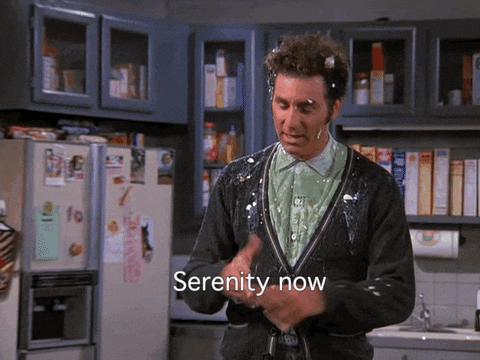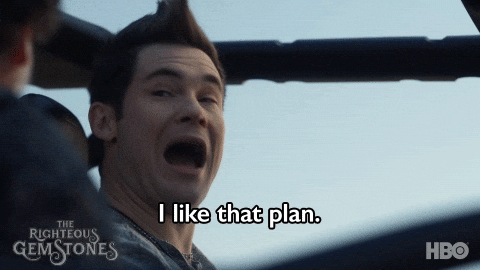7 Golden Rules For a CV That Actually Gets Interviews
What's in the fu#king box? Your next job!

It’s time to share something I haven’t written about before.
You know how I brag about my 15+ years of experience. Well, guess what? They all happened in the same company.
There, I’ve said it! I’ve worked for the same company since I got hired in 2010. I know what you might be thinking—I have one year of experience repeated fifteen times.
Working for so many years in one company usually means you plateau and your growth stops.
But it’s not the case here. Actually, it’s the other way around. I stayed with this company because every project I’ve worked on has helped me become a better engineer.
Over the years, I have had great mentors and coaches, and I’m surrounded by brilliant people, professionals who constantly push themselves to become just a little better every day.
However, I consider myself lucky. This is not the case for most people in the industry who want to grow.
For them, continuing to grow means finding a new environment that fosters growth. And this implies job hunting and interviews, which leads us to today’s topic: making a CV that stands out from the pile.
Given the above, I’m in no way qualified to write about this; thus, I have a special guest,
from , who knows a thing or two about crafting a CV that gets you interviews.Let’s start!
7 Golden Rules For a CV That Actually Gets Interviews
What’s up folks? How’s the class doing? Any cool stories?
I’m feeling excited about this one. I’ll be unlocking the sweet template to an incredible CV. After years of honing and fine-tuning and…well some common sense, I believe I’ve found the thing.
Seven golden rules.
How Biblical, again. Again??
This will take a while, so we better get going.
No personal info
The cardinal rule: if it’s not increasing your chances at getting an interview, it shouldn’t be there.
And of course you’ll keep your contact info in there, smart-a##. Let’s explore some examples.
Your amazing photo? Why? How does this help? The interviewer might find you attractive? You will seem more “human”? They’ll be able to connect the face with the text?
Your wood-working hobby? The way you choose to spend your free time? Do we really want to emphasise free time in a work-related context? They’re modern and they’ll understand? Alright, alright…
Save the personal stuff for the quirky HR-assisted “Hot Ones” type introduction to the team. When it comes to your CV, keep it strictly professional.
Formatting
A single page.
A single white page, actually. Yeah, I’ve seen a few of you. Don’t be shy, now. We all have our moments of brilliance.
Black text. The most boring, soul-crushing, corporate font you can find. Helvetica Nueue will do. Most likely designed by the folks at The Big 4.
The most fancy thing you’re allowed to do is bold important parts, which I actually encourage, and italic-fy something for readability.
I strongly advocate against “popular” templates such as Europass and the alike. One of the reasons why we keep our CV format boring is to enable easier parsing of it by computer programs. Not so bad, eh?
Another reason is the cardinal rule again - if it isn’t increasing your chances of an interview, it should not be there. Decorations and ribbons are not increasing your chances, so drop the fluff.
Sections
We’ve gotta use our page well. This is why every detail becomes important. So we always start with the most important or most relevant.
Okay I messed up, we start with something else. But it sounded so nice, I just had to go there. Anyways, we start with the contact info. Hey, that almost doesn’t count, right? Contact info is pretty short.
So, our sort-of-first place is…work experience! After follow education and the “other” section. And no, you don’t get to mention your passion for bird-watching in the “other” section.
Let’s recap:
contact
work
education
other (mysterious, ooo)
Contact
Come on, this one is sooo boring. But I have to mention it, right? People need to be able to reach you somehow, anyway.
full name
phone
github
Make everything a hyperlink if you can. Remember those automatic parsers? Help them out! Humans also love clicking URLs. There’s an entire industry behind it. So it can’t hurt.
A miserable, but notable step forward, toward the interview. Toward the perfect future. Sike!
Work
This is your breadwinner section. Your cash-cow. Your make it or break it moment. Are you excited? I sure as Hell am, let’s go!
The work section consists of N blocks, all of which have the same structure. One block for each job position you’ve held. Each block has a header, a body and a footer.
The blocks are ordered descending, starting with the latest experience at the top. I suggest you completely remove the experience which isn’t contributing. Since we’re sticking to a single page, we don’t have much space to waste anyway.
The header is simple. On the left there’s your title and the company you worked for. Emphasise things such as seniority level or lead position. This is a great place to put it, very front-facing. And on the right there’s a from-to timespan. Keep it simple, just month + year.
Here’s a relaxing gif for you, I need you focused for the next bit.
The body is where you get to flaunt your previous achievements. And I don’t say this lightly. Sell yourself!
I believe the trick is aligning your CV with the position you’re applying to. So, for each company I apply to, I will review my CV and create a custom edition for them and for the specific role I want.
A lot of people take this advice as “pretend” or “lie”. As you spend more time in the industry, you gain all sorts of experience and work on many vastly different projects. You get to highlight only a few in a CV. I just make sure I select the best ones for the role and the company.
Another aligning you can do is use the same terminology as the job listing or the company online presence in general. Going the extra mile in details such as this one makes all the difference. Especially if you’re competing at a high level.
You want your CV to scream impact. This means hard, measurable numbers. Think big. Focus primarily on the projects you’ve had the leading role in. These tend to be the most interesting to talk about during the interview.
Increased X by Y via multitenancy rearchitecture. Designed and implemented ABC which increased profitability by whatever %. Introduced telemetry into the team. It can be all sorts of stuff.
Bold the numbers, especially the $$$.
All right, go on a break. Here’s a gif.
Finally, the footer.
Keep it extremely simple: write out the tech stack as comma-separated-values. Literally, write “Tech stack: Go, Redis, Kafka, Grafana…”.
Don’t clutter the texts with the implementation details, but add them here. Bonus points for CSV format. We really go all-out for those parsers.
Education
This is the place to highlight your formal education. For some folks it’ll be college, for others it will be bootcamps and courses. I’ll use college in this text.
This section is quite simple. It consists of only a few entries, chronologically ordered just like the others. Keep it extremely simple with only two rows per entry.
The first row is university name and the timespan. Very similar to what we’ve done in the work section. The second row is degree level and degree topic. For example:
Faculty of Electrical Engineering and Computing Sep 2017. - Jul 2020.
Bachelor’s degree, Distributed systems
Other
The last section, nice. You’re almost ready to ship your new CV. Your CV2. Okay, I’ll see myself out…
This is your opportunity to highlight some other useful skills that may not fit the other sections. Stuff like interesting side-projects related to the role somehow, technical publications in papers or online, tech talks on conferences, blah, blah.
Get creative. People have a lot of useful skills they forget they could highlight. This is an especially valuable section for junior engineers with little work experience.
Personally, I find “the other” section a solid indicator of passion and high interest. I won’t hate if it’s empty, but I’ll give you bonus points if it’s not. And a sad reminder, still not a place to talk about your wood-working.
Subtitle reference, let’s hear it in the comments! What am I referencing and why (I mean, duuhh)?
Want to grab a CV template, following the rules I laid out? Subscribe and receive it immediately!
As always friends, thank you for reading. I’m getting positive messages from you and it makes me excited to keep writing the newsletter.














